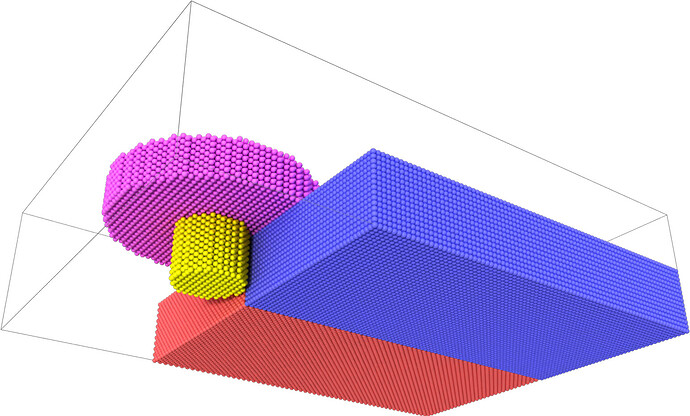Is it this difficult to Please Read This First: Guidelines and Suggestions for posting LAMMPS questions?
Besides, it doesn’t take much to realise that your code is not formatted correctly. Here is how it should look, had you look the rules before posting.
# --- Initialize Simulation
units metal
atom_style atomic
# --- Create Atoms
dimension 3
boundary p p p
lattice fcc 4.02
region allbox block -30 30 -25 60 0 20
create_box 4 allbox
# --- Plate left side
lattice fcc 4.02
region liner block -30 0 0 60 0 10
group lineg region liner
region leftr block -30 -10 0 60 0 10
group leftg region leftr
create_atoms 1 region liner
# --- Plate rigth side
lattice bcc 2.856
region rightr block 0.5 42 0 85 0 14
group rightg region rightr
create_atoms 2 region rightr
# --- toolpin
lattice bcc 3.615
region pin cylinder z 0 -6.5 5.6 2 11
group ping region pin
create_atoms 3 region pin
# --- toolshoulder
lattice bcc 3.615 #W
region shoulder cylinder z 0 -6.5 16.7 11.3 18
group shoulderg region shoulder
create_atoms 4 region shoulder
# --- completetool
region centg union 2 pin shoulder
group tool region centg
mass 1 26.981539
mass 2 55.845
mass 3 183.84
mass 4 183.84
# --- Define Interatomic Potential
pair_style eam/alloy
pair_coeff * * FeNiCrCoAl-heaweight.setfl.txt Al Fe Fe Fe
pair_coeff * * FeW.eam.alloy.txt Fe Fe W W
# --- Equilibration/Minimization
velocity all create 298.0 12345 rot no dist gaussian units box
fix 2 all nve temp 298.0 298.0 0.01 iso 0.0 0.0 0.5
thermo_modify lost ignore flush yes
thermo 100
thermo_style custom step time pe ke etotal temp lx ly lz press atoms
dump 1 all cfg 1000 AlFe1.*.cfg mass type xs ys zs
dump_modify 1 element Al Fe W W
log log.equilibr_1
timestep 0.001
run 5000
restart 15000 eqfile.restart
unfix 2
undump 1
Also, it would be useful to post the EAM potential files that you want to use in your simulation. I am no expert in the EAM potential, but the manual states:
Only a single
pair_coeffcommand is used with theeam/alloystyle which specifies a DYNAMO setfl file, which contains information for M elements. These are mapped to LAMMPS atom types by specifying N additional arguments after the filename in thepair_coeffcommand, where N is the number of LAMMPS atom types:
• filename
• N element names = mapping of setfl elements to atom types
Therefore, I would expect that the second pair_coeff command overrides the first one, and you effectively are simulating a system where atom types 1-2 are Fe and 3-4 are W.
Besides, your sample looks cool!
